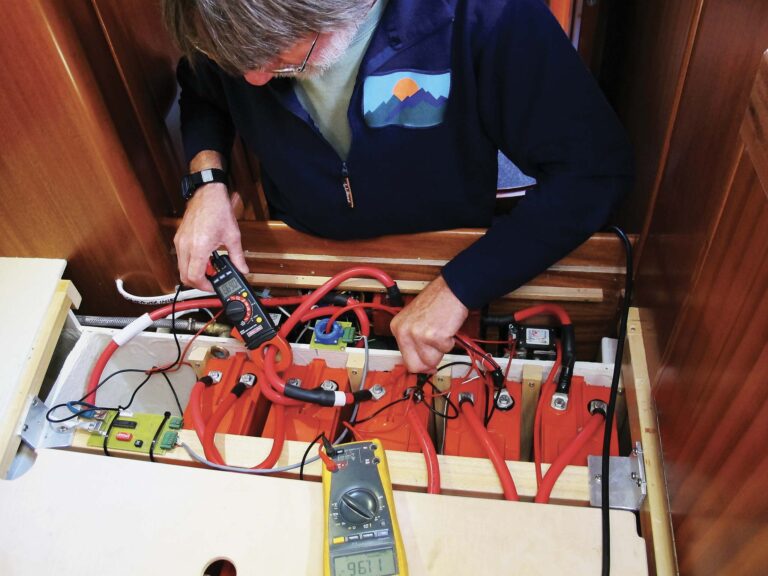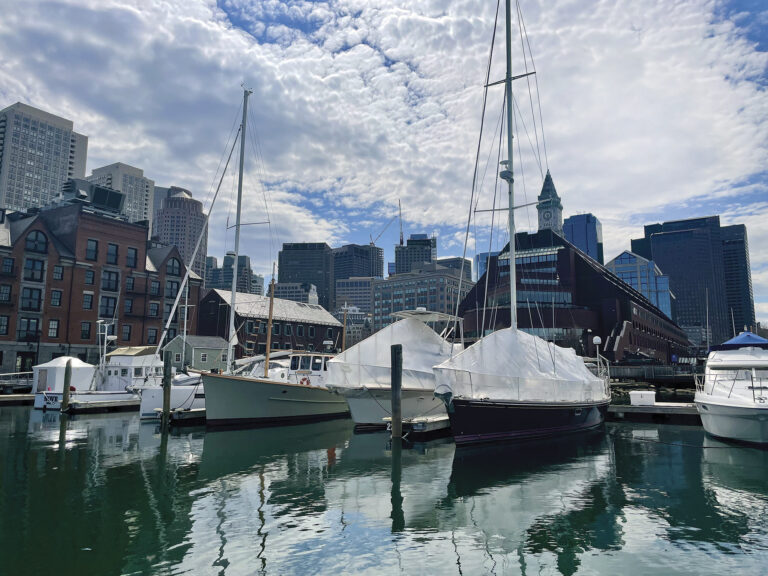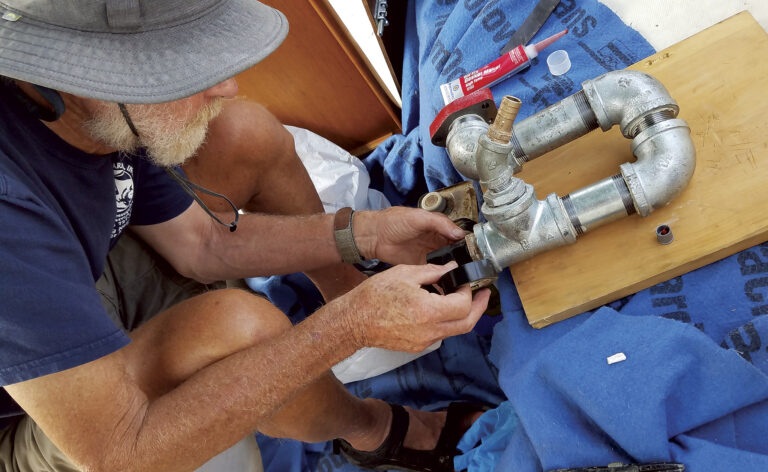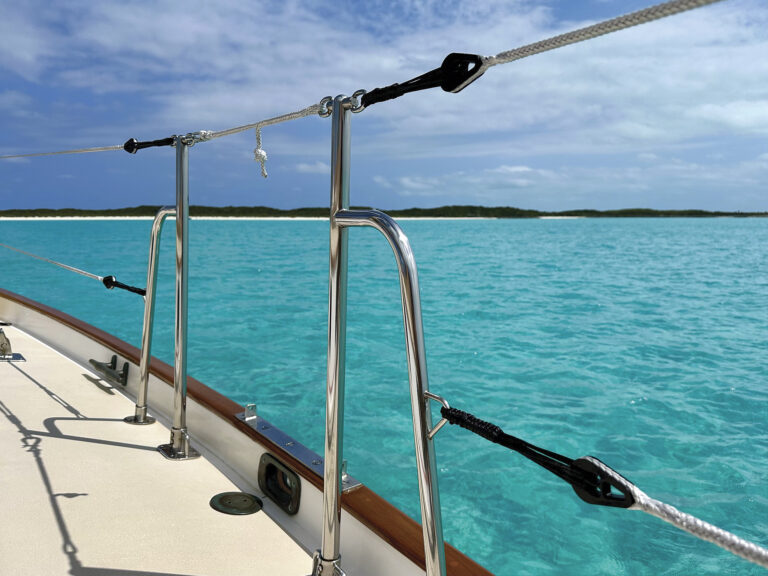A raw-water cooled engine is cooled by water drawn from outside the boat and circulated through its engine block and cylinder head.
On a fresh-water cooled engine, the “raw” water is pumped through a heat exchanger, where it draws the heat from the fresh water/antifreeze mix that cools the engine, and then is injected into the exhaust hose, where it cools the hot exhaust gas before being pumped overboard. In both cases an impeller-type pump circulates the raw water.
Impeller pumps are simple and robust, which is what you want such an essential item to be. The big flexible blades on the typical “rubber” (actually, it’s a synthetic compound) impeller will gobble up leaves, twigs, grit, and other detritus with scarcely a hiccup. When they stop working, though, you’re in trouble. When an impeller gives up the ghost it tends to disintegrate inside the pump body, and the shards from the vanes can cause some serious damage—for example, by blocking the tiny waterways inside a raw-water cooled engine, or by clogging up a vital artery inside a heat exchanger. With no cooling water getting to the exhaust, a fire is not beyond the realm of possibility.
Two things tend to finish off an impeller—owner negligence, or a lack of water. I managed to kill one by a combination of the two—I forgot to open the engine intake seacock. It took me all day to get the bits out of the heat exchanger. Often, impeller damage is caused by owners not bothering to drain water out of the pump body when winterizing the engine.
Some mechanics insist that you should change the impeller annually. Others say every second year should be enough, depending on where you sail (silty water wears impellers out more quickly) and the hours you put on the engine. I once had to replace an impeller at sea, an experience I’m not keen to repeat, so I figure an annual replacement at $20 or so is cheap insurance. At the very least, I will pull the impeller every spring and visually inspect it to make sure there are no cracks or splits in the blades. If it appears that the blades have taken a set, flip the impeller over when you replace it.
It only takes a minute of dry running to destroy an impeller; this doesn’t give you long to respond to your cooling water alarm (assuming you have one) and shut down the engine before the impeller self-destructs. For around the same price as a regular black impeller you can get a handsome blue Globe Run-Dry impeller, which can survive for 15 minutes without water. That quarter-hour might just be enough to get you into a harbor or anchorage where you can change the impeller at your leisure.
On some marine engines, most notably smaller Yanmar diesels, the impellers are very hard to get to. I love my little Yanmar 2GM, but I have to remove the water pump in order to change the impeller, and that would be a hell of a job on a dark, rough night. So I’ve fitted a Speedseal kit ($60) that does away with the half-dozen tiny screws securing the pump cover. This will make it much easier for me to change the impeller in a hurry.
Changing an Impeller
1. If the boat is in the water, be sure to close the inlet seacock. Impellers can be hard to access. On some engines you’ll have to loosen the drive belt, remove the inlet and outlet hoses, and remove the pump. Then remove the screws holding the faceplate onto the pump. If you haven’t tried to open the pump for a while, these little screws can often be the devil to undo.
2. You may have to use a screwdriver to pry the faceplate free from the body. Take care not to damage it. The plate will be sealed with a paper gasket or an O-ring. In either case, plan on replacing it.
a. Check the plate for wear.
3. Most impellers are push-fitted onto the central spline, but some are fastened to it with a bolt or screw, which will need to be removed. You can usually get the impeller out by gripping its body (not the blades) with a pair of channel-lock or needle-nosed pliers. You could also buy a special impeller removal tool.
4. Make sure the vanes are facing in the right direction when you fit the new impeller (opposite to the “direction of rotation” mark on the pump faceplate). Sometimes it can be a bear to bend the stiff blades enough to fit them into the pump body, a job you need more than five fingers for. Use a plastic cable tie to hold the blades in the right position.
a. When you push the impeller into the pump, the cable tie will slide off. Grease the pump body lightly with Vaseline or water pump grease; this will keep the impeller lubed until the water starts flowing.
5. Rather than fiddle about with those tiny screws again, I fitted a Speedseal cover.
6. This cover has just four screws, with knurled heads so there’s no need to use tools to get the cover off. You just need to remove two of the screws, and loosen the other two; the cover is slotted, so it slides right off. If I have a spare impeller ready to go, I should be able to replace a ruined one without having to remove the pump. Since impellers never choose a convenient time to fall apart, I look on this as a safety feature. Speaking of which—don’t forget to open the seacock!









